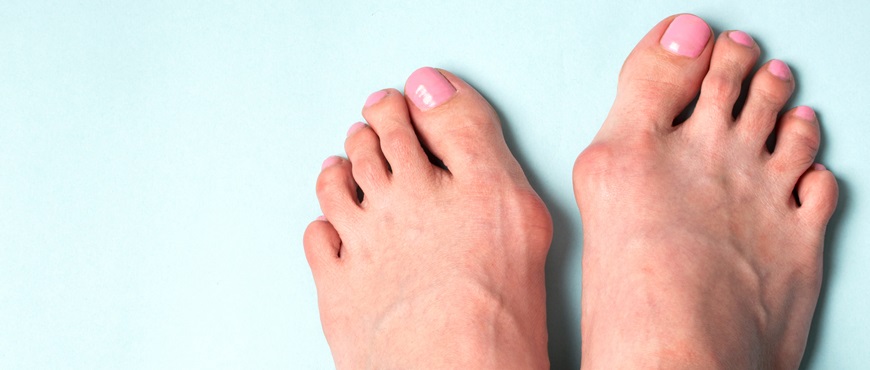Hallux Valgus
Who Occurs?
In societies that do not wear shoes, this deformity is less common. Fashion shoes are frequently encountered. Pointed, high-heeled shoes, cowboy boots are the main responsible. The more frequent occurrence in women is because they often prefer heeled shoes, as well as the structural looseness of their ties. Also, as with any disease, there is a genetic predisposition. The probability of occurrence of this condition in the family with Hallux Valgus is much higher than those without.
Causes of Hallux Valgus
The exact cause of Hallux Valgus is unclear, but the most important factors affecting its formation are:
- Family history, heredity
- Narrow or high heeled shoes
- Achilles tendon shortness
- Joint laxity due to excessive mobility
- Having flatfoot or combed feet (wide and flat)
- Having weak connective tissues
- Foot deformations due to foot injuries (such as fractures)
- Obesity or overweight and standing for a long time
- To have rheumatoid arthritis
Hallux Valgus Symptoms
- Changing the appearance of the foot
- Pain around the body (sometimes inflamed)
- Swelling and redness around the body
- In some cases, drowsiness, burning or tingling
- Difficulty walking as the bunion deteriorates and deformation increases (like the foot shape changes, weight distribution also changes)
In the early stages of Hallux Valgus, there are usually no symptoms. Symptoms are more noticeable as the bunion worsens. Pain and skin redness are more intense, especially when wearing narrow or high-heeled shoes.
How is Hallux Valgus Diagnosed?
The diagnosis of Hallux valgus begins with a detailed examination of the foot without any pressure. The diagnosis is confirmed by the X-ray examinations to be made while stepping on it, and the type of treatment is planned. Further investigations are often not required for diagnosis and treatment planning except in special cases. Your doctor may require special investigations such as magnetic resonance imaging and EMG.
Hallux Valgus Treatment
The first choice in the treatment of Hallux Valgus is not always surgical intervention. Particularly, mild bunions are treated with different non-surgical preventive methods. These treatments include:
- Physiotherapy and foot exercise
- Suitable for deformation of the big toe, comfortable shoes
- Professional shoe moulds for expanding shoes
- Bunion pads (placed on bunion) to alleviate pain
- Orthotic devices such as night splint, special shoes
- Use anti-inflammatory and pain medications when needed
- Ice treatment on the body to get rid of inflammation and pain
- Avoiding long-term standing work as it may cause pain
Surgical treatment is the only option if the pain intensity increases and reaches the dimensions that affect daily life despite all non-surgical methods.
Hallux Valgus Surgery
The type of surgical procedure is determined by the degree of Hallux Valgus. Therefore, to determine the degree of foot X-ray films should be evaluated very accurately. Because the main purpose of the surgery is to return the big toe to the correct anatomical position, eliminating the possibility of recurrence.
During surgery, bones, tendons, ligaments and nerves are brought back to their original order and the lump is removed. Most of the surgical interventions are performed near the thumb of the comb. Some surgical techniques, such as freezing the thumb joint, are used depending on the degree of the bunion.

